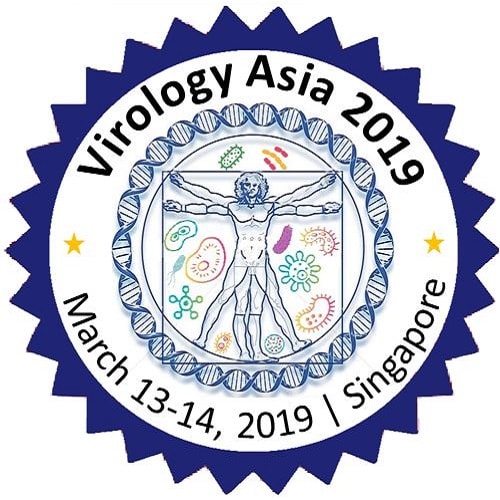
Irina St.Louis
University of Minnesota Medical School, USA
Title: Immune reconstitution inflammatory syndrome associated with HIV and cryptococcosis
Biography
Biography: Irina St.Louis
Abstract
Introduction & Aim: Paradoxical Cryptococcosis- associated immune reconstitution inflammatory syndrome (C-IRIS) occurs in 20% of HIV-infected patients with Cryptococcal Meningitis (CM) after they commence Antiretro Viral Therapy (ART). The pathogenesis of C-IRIS remains poorly understood, with few biomarkers to predict C-IRIS or to establish an early diagnosis. We investigated periferal blood transcriptomic profiles of ART-naive, advanced stage HIV-infected subjects with confirmed cryptococcal meningitis, in two recently completed clinical trials: Immune Restoration Disorders (IRD) and Cryptococcal Optimal ART Timing (COAT). The aims of presented research are to (1) Identify a dysregulation in gene expression underlying C-IRIS (2) Identify novel diagnostic or predictive transcriptomic biomarkers associated with the development of C-IRIS or death due to C-IRIS.
Method: C-IRIS subjects were compared with controls, matched by age, gender, baseline HIV viral load, and CD4+ T-cell counts. Subjects were assigned into 4 groups (1) No C-IRIS or death (controls, appropriate immune restoration) (2) C-IRIS survivors (3) C-IRIS death and (4) Death but no C-IRIS (other causes). Gene expression was analized longitudinally, by whole genome microarrays or next-generation sequencing, over 12 weeks on ART (at 0 (baseline), 2, 4, 8, 12 weeks after ART initiation).
Result: The predictor screening algorithms identified the low expression of interferon-driven anti-viral defense pathway components such as interferon-inducible genes and higher expression of transcripts that encode for granulocyte-dependent pro-inflammatory response molecules as predictive biomarkers of subsequent C-IRIS at baseline. Subjects who developed early C-IRIS (occurred within 12 weeks of ART initiation) were characterized by upregulation of biomarker transcripts involved in innate immunity such as the inflammasome pathway while those with late C-IRIS events (occurs after 12 weeks of ART) were characterized by abnormal upregulation of transcripts expressed in T, B and NK cells, such as IFNG, C1QC, IL27 and others. The AIM2, HLA-DQA2 and BEX1 were identified as novel biomarkers for both early and late C-IRIS events. Majority of biomarker transcripts involved in innate immunity (inflammasome and toll-like receptor signaling), were upregulated to even higher levels in the C-IRIS death group. In addition, the upregulation of transcripts encoding components of IL6, B-cell signaling, and Fc-gamma receptor-mediated phagocytosis were associated with death in those with C-IRIS. Patients from the death but no C-IRIS group showed significant activation of NFkB and death receptor pathways at baseline and strong signature of neutrophil activation/degranulation at 2 weeks on ART.
Conclusion: Low levels of transcripts encoding components of interferon-driven antiviral immune responses prior to ART was predictive of the development of C-IRIS. Fatal C-IRIS events exhibited exaggerated inflammation, represented by upregulation of transcripts encoding components of both adaptive (B-cell) and innate immunity. Although each type of C-IRIS events have seemingly similar clinical manifestations, they have different molecular phenotypes and are driven by contrasting inflammatory signaling cascades. These results provide insight into the pathogenesis of C-IRIS that could be applied to developing diagnostic tests or targeted immunomodulatory treatments.

